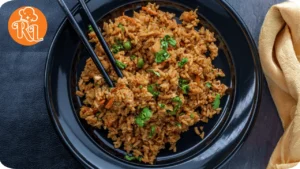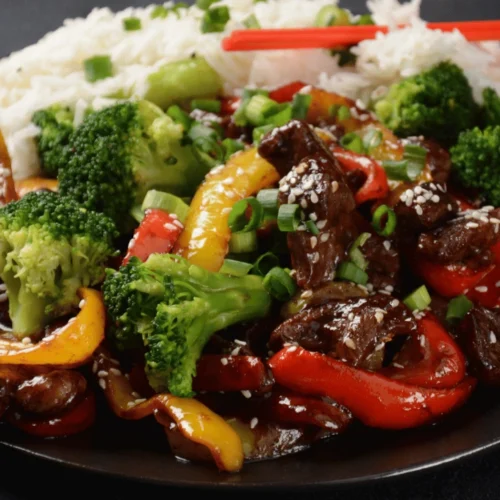Beef fried rice is a versatile and comforting dish that has its origins in Chinese cuisine but has been embraced by cultures all over the world. This flavorful meal combines tender beef, rice, vegetables, and a blend of seasonings, creating a dish that is hearty, satisfying, and perfect for any occasion. Whether you’re looking for a quick weeknight dinner, meal-prep inspiration, or a crowd-pleasing option for a gathering, beef fried rice checks all the boxes.
In this article, we’ll explore the origins of beef fried rice, various cooking techniques, and several creative ways to make this dish unique. You’ll learn how to perfect the dish with tips on preparing the beef, choosing the right rice, and balancing flavors. Whether you’re a beginner or an experienced home cook, beef fried rice can be customized to your preferences and dietary needs, making it an indispensable recipe in any kitchen.
The History and Origins of Fried Rice
Fried rice has a rich history that dates back to ancient China. Its origin can be traced to the Sui Dynasty (589–618 AD) in the city of Yangzhou, where it was initially a way to repurpose leftover rice and prevent waste. The basic concept of fried rice is to cook pre-cooked rice with various ingredients, including vegetables, meat, and seasonings, in a wok or large pan. Over time, the dish evolved and spread to other regions of China and Southeast Asia, with different versions and variations emerging in each area.
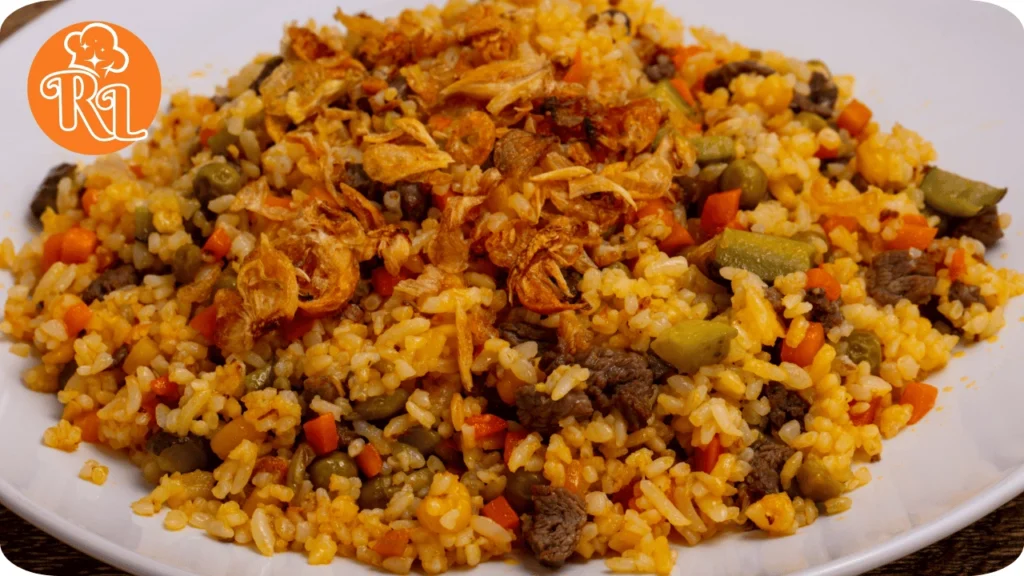
Beef fried rice, specifically, is a more modern adaptation, often associated with Western influences where beef is more commonly consumed than in traditional Chinese cuisine. In China, pork, chicken, and seafood were historically more prevalent, but beef became popular in fried rice dishes as the dish spread to other parts of the world. Today, beef fried rice is a beloved fusion of Eastern and Western flavors, enjoyed in homes and restaurants globally.
The Components of Perfect Beef Fried Rice
At its core, beef fried rice consists of a few key components that work harmoniously together to create a balanced dish. Understanding each element is essential to achieving the perfect texture and flavor. Let’s break down the main components of beef fried rice:
1. The Beef
The choice of beef is critical to the overall taste and texture of your fried rice. Traditionally, beef cuts such as flank steak, sirloin, or ribeye are used due to their tenderness and rich flavor. These cuts can be quickly seared or stir-fried, making them ideal for a fast-cooking dish like fried rice.
The beef is typically marinated or seasoned before being cooked, infusing it with a burst of flavor. Marinating the beef for even a short period enhances its tenderness and helps it absorb the flavors of soy sauce, garlic, ginger, and other spices. Thinly slicing the beef against the grain is a common technique that ensures the meat remains tender after cooking.
2. The Rice
The type and preparation of the rice can make or break a fried rice dish. The most critical factor in achieving the perfect fried rice is using day-old rice or rice that has been cooked and cooled. Freshly cooked rice is too moist and sticky, leading to clumping, while day-old rice is drier and separates easily, resulting in a perfect texture.
Long-grain rice varieties like jasmine or basmati are preferred for fried rice because they cook up fluffy and don’t stick together. However, medium-grain or even short-grain rice can also be used, depending on personal preference. Properly cooking and cooling the rice before frying is essential to avoid a soggy or mushy dish.
3. Vegetables
A variety of vegetables can be added to beef fried rice, bringing color, texture, and nutrition to the dish. Common vegetables include peas, carrots, onions, and bell peppers, but there’s plenty of room for creativity. The vegetables should be diced or sliced into small, uniform pieces so they cook quickly and evenly in the stir-fry.
Adding garlic, ginger, and green onions is also common in beef fried rice, as these aromatics infuse the dish with fragrant, savory flavors. Vegetables should be cooked just until they’re tender but still retain a bit of crispness, providing a pleasant contrast to the softness of the rice and beef.
4. Seasonings and Sauces
The seasonings and sauces used in beef fried rice tie the entire dish together. Soy sauce is the most common seasoning, adding a salty, umami-rich flavor that enhances the taste of the beef and rice. Dark soy sauce or tamari can be used for a deeper color and more robust flavor, while light soy sauce provides a more delicate seasoning.
Other seasonings may include oyster sauce, which adds depth and a slight sweetness, as well as hoisin sauce, sesame oil, or chili sauce for a bit of heat. A dash of white pepper or black pepper adds a subtle kick without overpowering the other flavors. Some recipes may also include a splash of rice vinegar or lime juice for acidity, balancing the richness of the beef.
5. Eggs
Eggs are a popular addition to beef fried rice, adding both flavor and texture. Scrambling the eggs and incorporating them into the rice provides richness and enhances the overall dish. The eggs are usually cooked separately before being mixed into the fried rice, ensuring they retain their soft, fluffy texture.
Step-by-Step Guide to Making Beef Fried Rice
Making beef fried rice is simple, but mastering the dish requires attention to detail and proper technique. Below is a step-by-step guide that will help you achieve the perfect balance of flavors and textures every time.
Step 1: Preparing the Beef
Start by thinly slicing the beef against the grain to ensure tenderness. You can marinate the beef in a mixture of soy sauce, sesame oil, garlic, and ginger for at least 15-30 minutes to enhance the flavor. Once marinated, set the beef aside while you prepare the other ingredients.
Step 2: Cooking the Rice
As mentioned earlier, the rice should ideally be made a day ahead. If you’re pressed for time, spread freshly cooked rice on a baking sheet and refrigerate it for 30 minutes to dry it out. This step is essential for achieving the fluffy, non-sticky texture that fried rice is known for.
Step 3: Stir-Frying the Beef
Heat a wok or large frying pan over high heat, adding a bit of oil. Once the oil is hot, quickly stir-fry the beef in batches to avoid overcrowding the pan. Cook the beef for 2-3 minutes until it’s browned and cooked through. Remove the beef from the pan and set it aside.
Step 4: Cooking the Vegetables
In the same pan, add a bit more oil if necessary, and sauté the vegetables. Start with harder vegetables like carrots and bell peppers, and then add softer vegetables like peas and onions. Stir-fry the vegetables until they are tender but still crisp, which should take about 3-4 minutes.
Step 5: Scrambling the Eggs
Push the vegetables to one side of the pan and crack the eggs into the empty side. Scramble the eggs until they are fully cooked, then mix them with the vegetables.
Step 6: Combining the Ingredients
Once the eggs and vegetables are cooked, add the day-old rice to the pan. Stir everything together, ensuring that the rice gets coated with the flavors of the vegetables, eggs, and seasonings. Add the soy sauce, oyster sauce, and any other seasonings to taste. Stir-fry the mixture for another 3-4 minutes, allowing the rice to crisp up slightly.
Step 7: Adding the Beef
Finally, return the cooked beef to the pan and mix it with the rice. Stir-fry everything together for 1-2 minutes to ensure the beef is heated through and evenly distributed. Taste the fried rice and adjust the seasoning with additional soy sauce, pepper, or sesame oil if needed.
Step 8: Garnishing and Serving
Once everything is well-combined, remove the beef fried rice from the heat and garnish with chopped green onions or sesame seeds for added flavor and texture. Serve the dish hot, either on its own or alongside other Asian-inspired dishes like dumplings or spring rolls.
Simple Steps to Perfect Beef Fried Rice recipe
Equipment
- Wok or Large Skillet: For stir-frying the ingredients.
- Cutting Board: For chopping vegetables and slicing beef.
- Chef's Knife: For precise cutting of ingredients.
- Spatula or Wooden Spoon: For stirring and mixing the ingredients in the pan.
- Measuring Cups and Spoons: For accurate ingredient measurements.
- Mixing Bowl: For beating the eggs and combining other ingredients.
- Serving Dish: To serve the finished beef fried rice.
Ingredients
- Beef: 1/2 lb (225g) of flank steak or sirloin, thinly sliced
- Cooked Rice: 3 cups of day-old cooked rice (preferably long-grain like jasmine rice)
- Vegetable Oil: 2 tablespoons for stir-frying
- Soy Sauce: 3 tablespoons (adjust to taste)
- Oyster Sauce: 1 tablespoon (optional, for added depth)
- Garlic: 3 cloves, minced
- Ginger: 1 tablespoon, freshly grated
- Onion: 1 small onion, finely chopped
- Frozen Peas and Carrots: 1 cup (or use fresh, diced vegetables)
- Eggs: 2 large eggs, beaten
- Green Onions: 2 stalks, chopped (for garnish)
- Sesame Oil: 1 teaspoon for finishing (optional)
- Salt and Pepper: To taste
- Chili Flakes: Optional, for added heat
Instructions
- Prepare the Beef: In a mixing bowl, combine the sliced beef with 1 tablespoon of soy sauce and let it marinate for about 15 minutes.
- Cook the Eggs: Heat 1 tablespoon of vegetable oil in a wok or large skillet over medium-high heat. Pour in the beaten eggs and scramble until fully cooked. Remove the eggs from the pan and set aside.
- Stir-Fry the Beef: In the same pan, add another tablespoon of oil. Once hot, add the marinated beef. Stir-fry for about 2-3 minutes, or until the beef is browned and cooked through. Remove from the pan and set aside.
- Sauté the Vegetables: Add a little more oil if needed, then add the chopped onion, garlic, and ginger to the pan. Stir-fry for 1-2 minutes until fragrant. Then add the frozen peas and carrots, cooking for another 2-3 minutes until the vegetables are tender.
- Combine Rice and Beef: Add the day-old cooked rice to the pan, breaking up any clumps. Pour in the remaining soy sauce and oyster sauce (if using), stirring to combine everything well.
- Mix in Eggs and Beef: Return the scrambled eggs and cooked beef to the pan. Stir everything together, ensuring the ingredients are evenly mixed and heated through.
- Season and Serve: Taste the fried rice and adjust the seasoning with salt, pepper, and sesame oil if desired. Garnish with chopped green onions before serving.
- Enjoy: Serve the beef fried rice hot, either on its own or alongside your favorite sides!
Notes
- Use Day-Old Rice: For the best texture, use rice that has been cooked and cooled the day before. Freshly cooked rice tends to be too moist and can become mushy.
- Marinate the Beef: Allowing the beef to marinate enhances its flavor and tenderness. Even a short marination of 15-30 minutes makes a difference.
- Vegetable Variations: Feel free to add other vegetables like bell peppers, corn, or broccoli to customize your beef fried rice.
- Heat Level: Adjust the amount of chili flakes or add sriracha for extra heat, depending on your spice preference.
- Leftovers: This dish keeps well in the refrigerator for 2-3 days. Reheat in a skillet for best results.
- Cooking in Batches: If making a larger quantity, consider cooking in batches to avoid overcrowding the pan, which can result in uneven cooking.
- Gluten-Free Option: Substitute soy sauce with tamari or a gluten-free soy sauce for a gluten-free version of this dish.
- Serving Suggestions: Pair with spring rolls, dumplings, or a side salad for a complete meal.
Variations and Creative Twists
While traditional beef fried rice is a classic, there are countless ways to make the dish your own by experimenting with different flavors, ingredients, and cooking techniques. Below are some ideas for taking your beef fried rice to the next level:
1. Korean-Inspired Beef Fried Rice
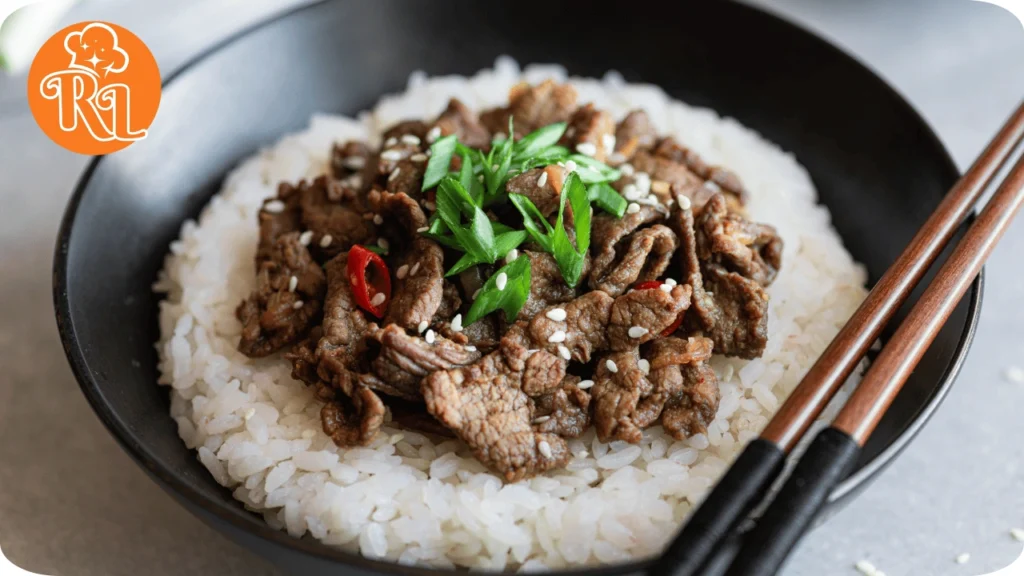
For a Korean twist, use bulgogi-style beef in place of regular marinated beef. Bulgogi beef is thinly sliced and marinated in a sweet-savory sauce made with soy sauce, sugar, garlic, sesame oil, and Asian pear. You can also add a bit of gochujang (Korean chili paste) for heat and serve the dish with a side of kimchi for a tangy contrast.
2. Thai-Inspired Beef Fried Rice
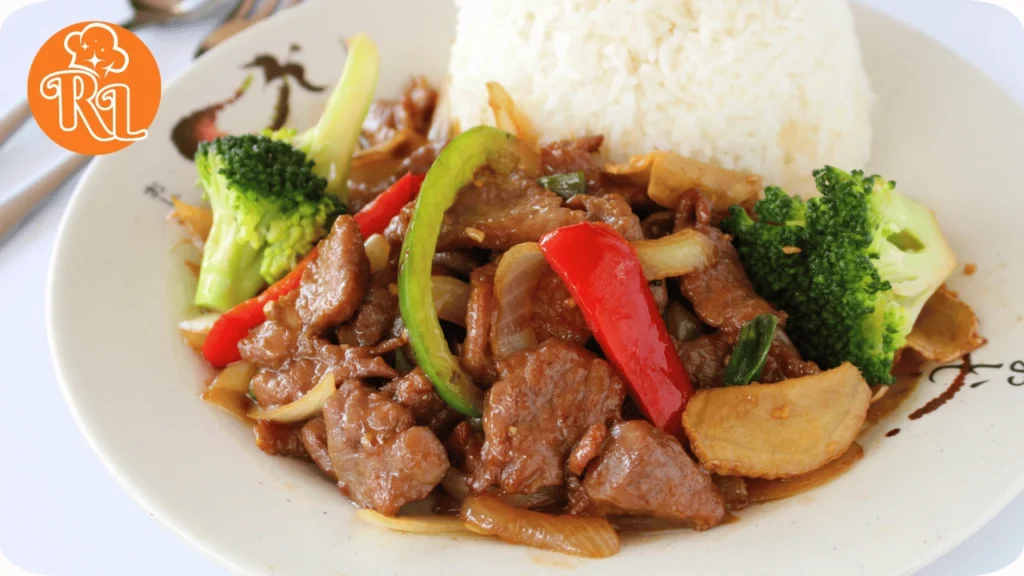
To create a Thai-inspired version, incorporate Thai basil, fish sauce, and lime juice into your fried rice. Use jasmine rice for an authentic Thai flavor, and top the dish with fried shallots and a fried egg for added richness. A drizzle of Thai chili sauce or sriracha will give the dish a spicy kick.
3. Low-Carb Beef Fried Rice
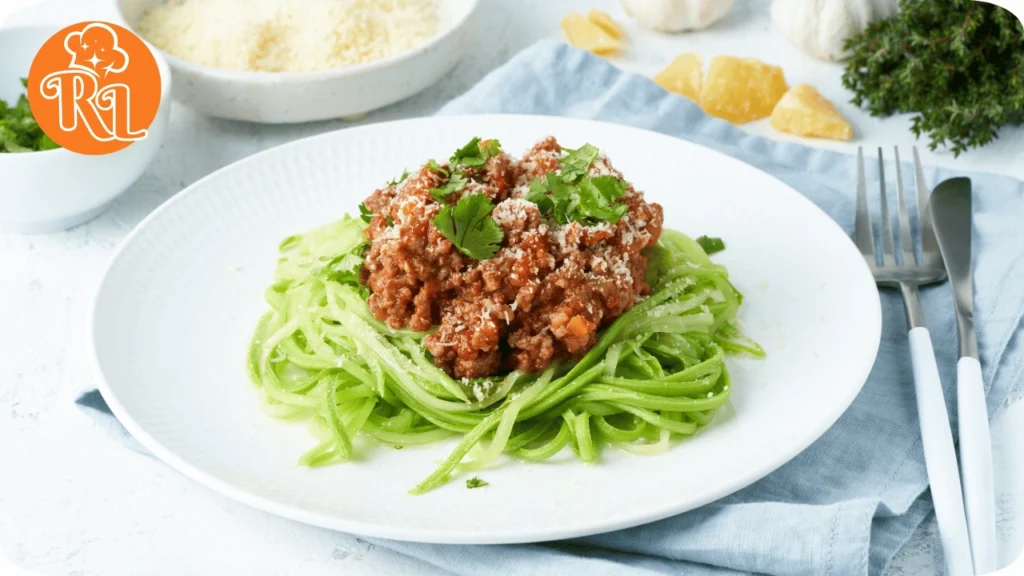
For those following a low-carb or keto diet, you can substitute the rice with cauliflower rice. Cauliflower rice is a great alternative that mimics the texture of traditional rice without the carbs. Simply pulse cauliflower florets in a food processor until they resemble rice grains, and follow the same cooking steps as you would for regular rice.
4. Spicy Szechuan Beef Fried Rice
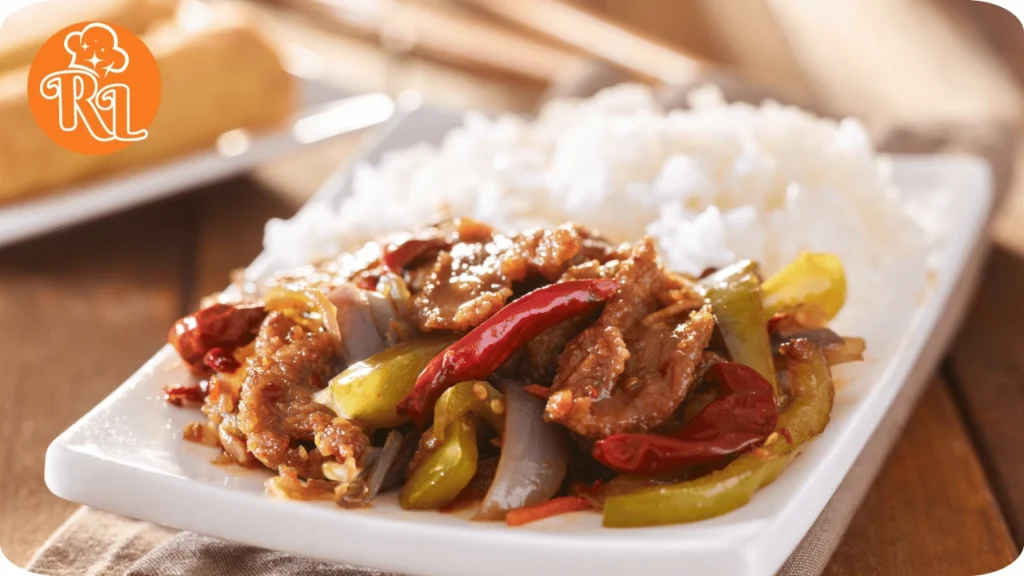
For those who love heat, try a Szechuan-style beef fried rice. Add Szechuan peppercorns and dried chilies to the stir-fry for a numbing, spicy flavor that’s characteristic of this Chinese region. You can also include hoisin sauce and a touch of sugar for a sweet and spicy balance.
Serving Suggestions and Pairings
Beef fried rice is a versatile dish that can be served on its own as a complete meal or paired with other dishes for a more elaborate spread. Here are some serving suggestions and pairings to complement your beef fried rice:
1. Spring Rolls or Egg Rolls
Serve beef fried rice alongside crispy spring rolls or egg rolls for a textural contrast. The crunchy exterior of the rolls pairs perfectly with the soft, savory fried rice.
2. Dumplings
Dumplings filled with pork, shrimp, or vegetables are a great accompaniment to beef fried rice. Steamed or pan-fried dumplings add an additional layer of flavor and texture to the meal.
3. Asian-Inspired Salads
A light, refreshing salad with Asian flavors can balance the richness of the beef fried rice. Try a cucumber salad with sesame dressing or a spicy papaya salad with lime and peanuts.
4. Soup
A bowl of hot and sour soup or egg drop soup is a comforting starter to serve before or alongside your beef fried rice. The warmth and flavor of the soup enhance the overall dining experience.
Conclusion
Beef fried rice is the ultimate comfort food that combines the rich, savory flavors of beef with the satisfying texture of rice and vegetables. Whether you’re making a traditional version or experimenting with different cuisines and flavors, this dish is endlessly versatile and easy to customize. By mastering the basic techniques of stir-frying and seasoning, you can create a delicious and well-balanced meal that will quickly become a household favorite. Whether you’re cooking for yourself, family, or friends, beef fried rice is sure to satisfy any craving for hearty, flavorful food.

